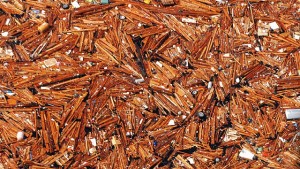Every year Californians go out together for Coastal Cleanup Day, our state's largest volunteer event; the 2012 Coastal Cleanup Day is this coming Saturday, September 15. While the underlying purpose of picking up trash has not changed, this year will feature a bit of citizen science as participants keep an eye peeled for debris washing ashore from the March 2011 Japanese tsunami.
Regular beachgoers see items of Japanese origin every now and then. Glass fishing floats are probably the most collectible of these. But the vast floating carpet of wreckage made by the tsunami is something else, and an international task force is preparing for its arrival. So far we don't have any confirmed tsunami debris in California, but items have started landing in Oregon, including a large dock that arrived at Agate Beach in June. Washington state has seen a lot of debris, enough that it has set up a web portal to keep track. Clearly we're next. So for the 2012 Coastal Cleanup Day, field organizers will have special data cards handy to record anything that looks like it was made in Japan. Expect this to happen next year too, and in 2014 as well.
One reason to monitor this debris is public safety. Everything on the Tohoku coastline was demolished on March 11, 2011, including chemical tanks and drums of toxic materials, and the giant waves took it all out to sea indiscriminately. (Fortunately none of it is radioactive.) Also, Japan has pledged money to help the states clean up tsunami debris, which is very gracious of them. In fact, it's conceivable that some lost items will be identified and returned to their owners!
Another reason is that wherever data is gathered, some scientist will sooner or later conduct some research on it. There is a long history of using floating objects, like messages in bottles, to help map ocean currents. An early example of a tsunami-style accidental experiment was the great toy spill of 1992. A shipping container full of rubber bath toys spilled overboard in the middle of the Pacific, and the eventual arrival of the toys on the West coast helped map the currents of the North Pacific Gyre. I read about it in a scientific journal. Twenty years later there are still thousands of those rubber duckies out there.
